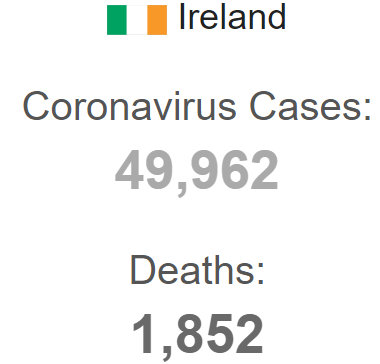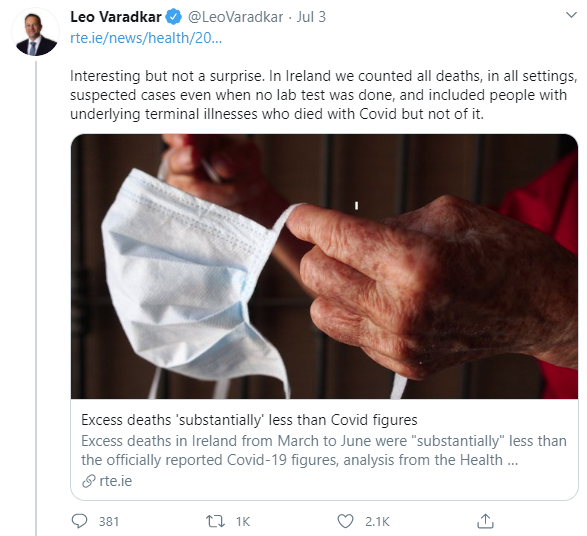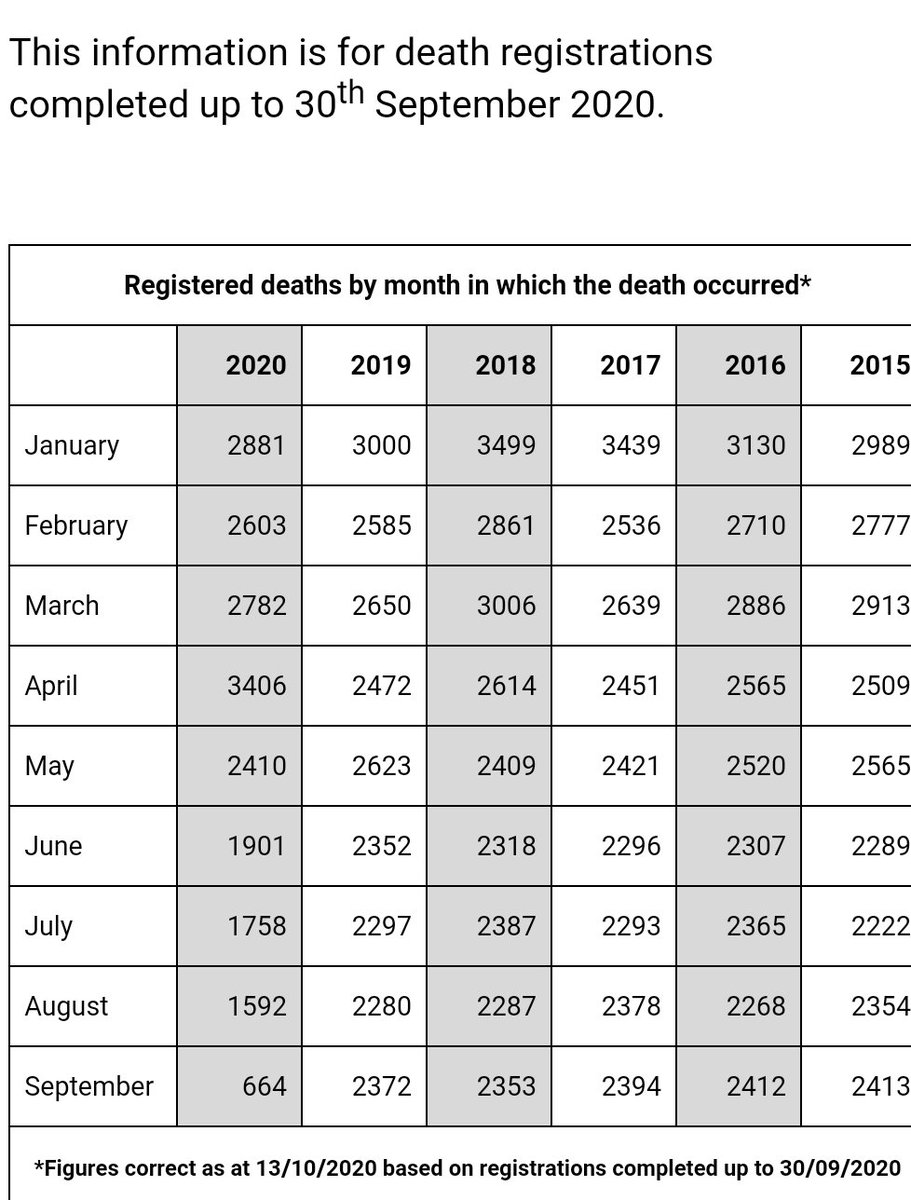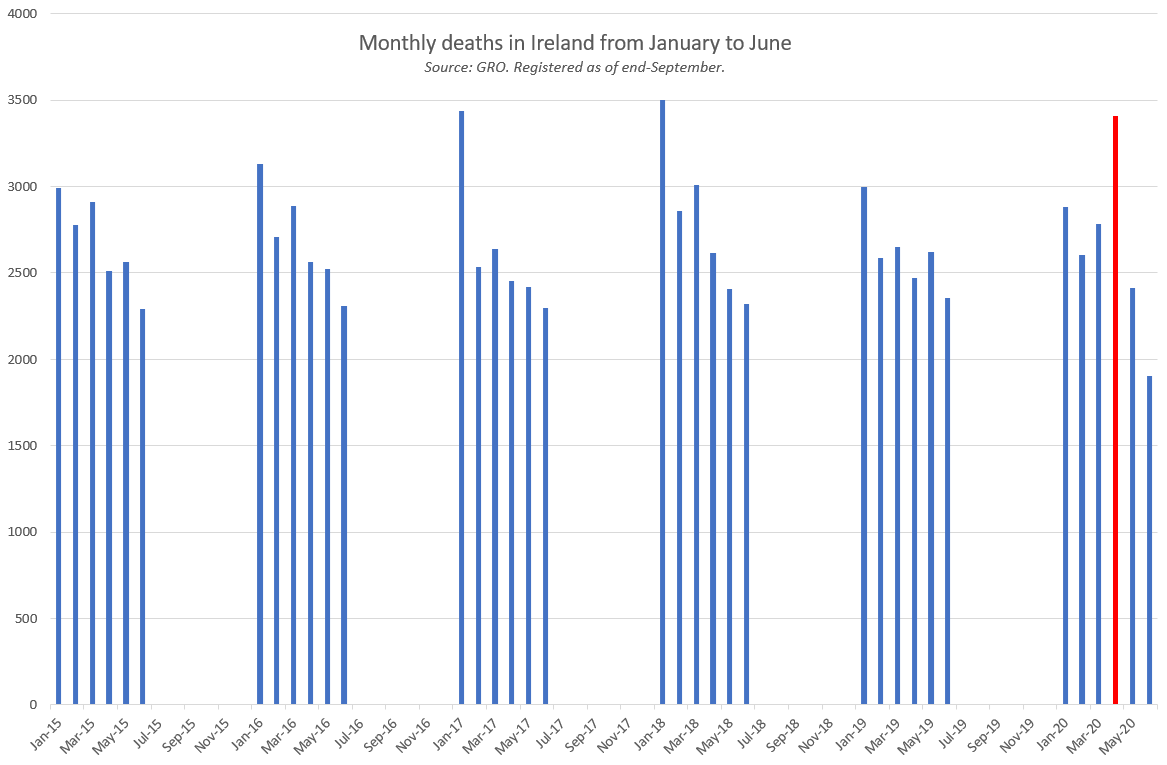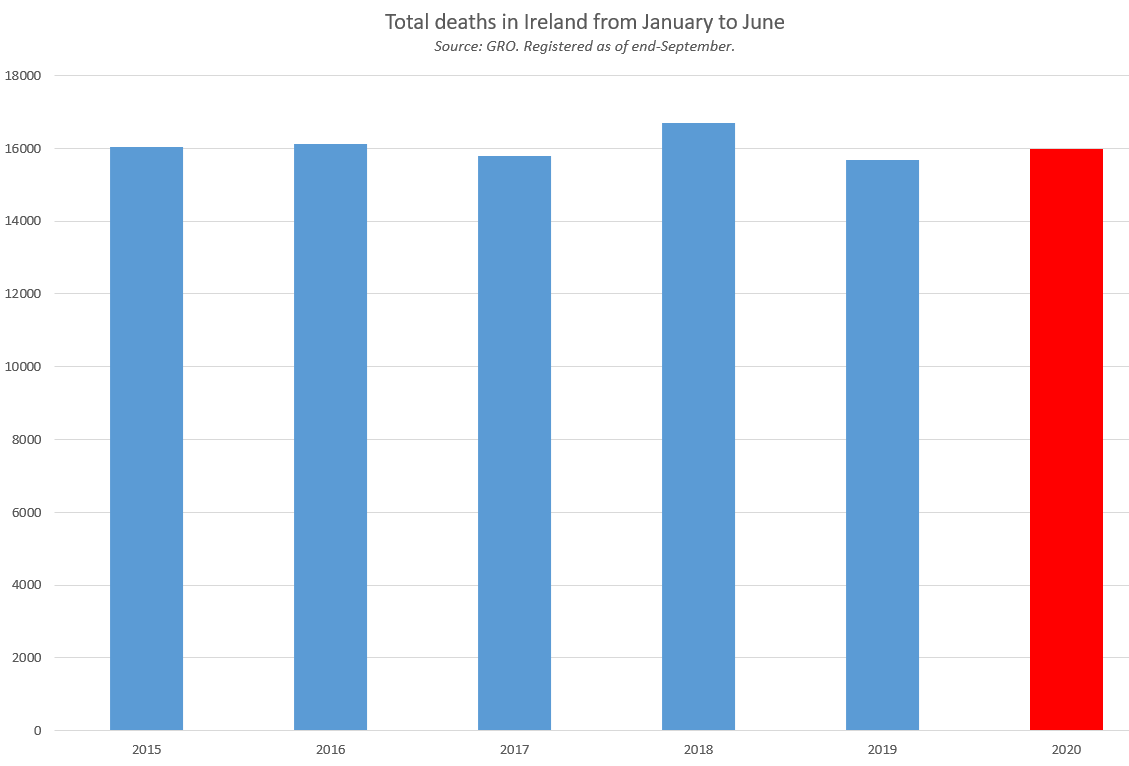
Nobody who understands what I'm about to say can think about the Covid-19 crisis again in the same way. 👇👇👇
It's all based on objective data, and simple estimates.
Please retweet this and let's raise the level of understanding.
It's all based on objective data, and simple estimates.
Please retweet this and let's raise the level of understanding.
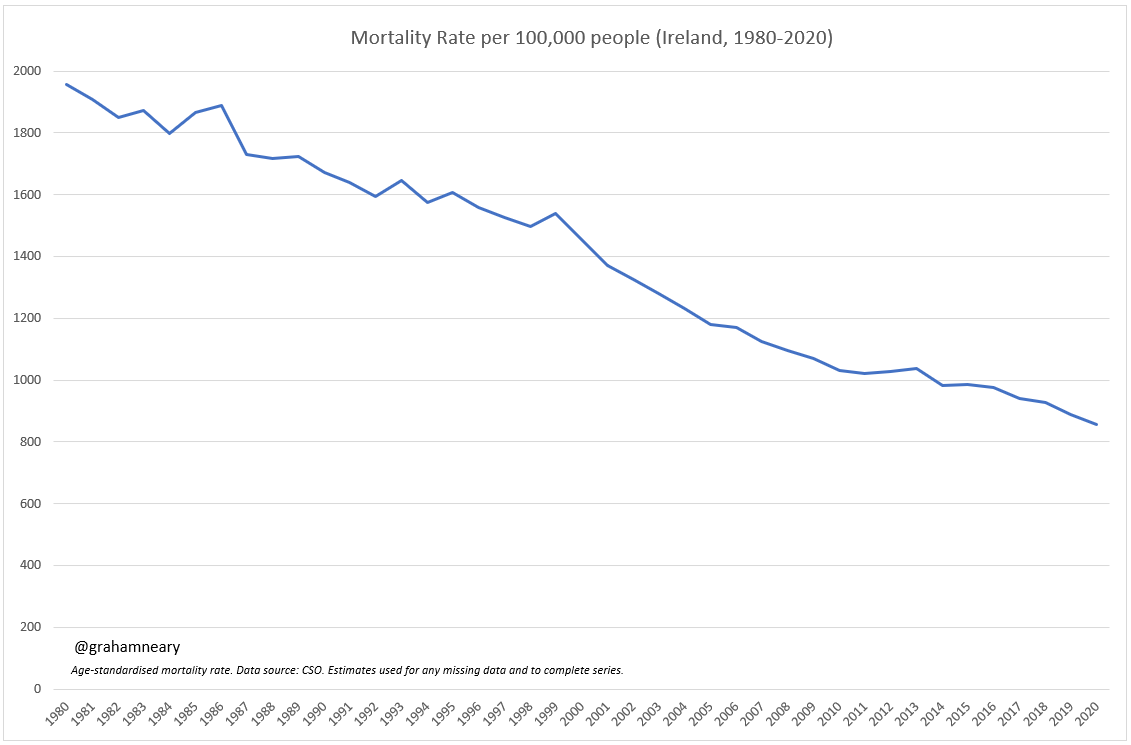
I've already shown that in Ireland, the first six months of 2020 were nothing special, in terms of deaths per 1,000 people.
The number of deaths was perfectly normal.
Quite surprising!

The number of deaths was perfectly normal.
Quite surprising!
https://twitter.com/GrahamNeary/status/1317880326371352577?s=20
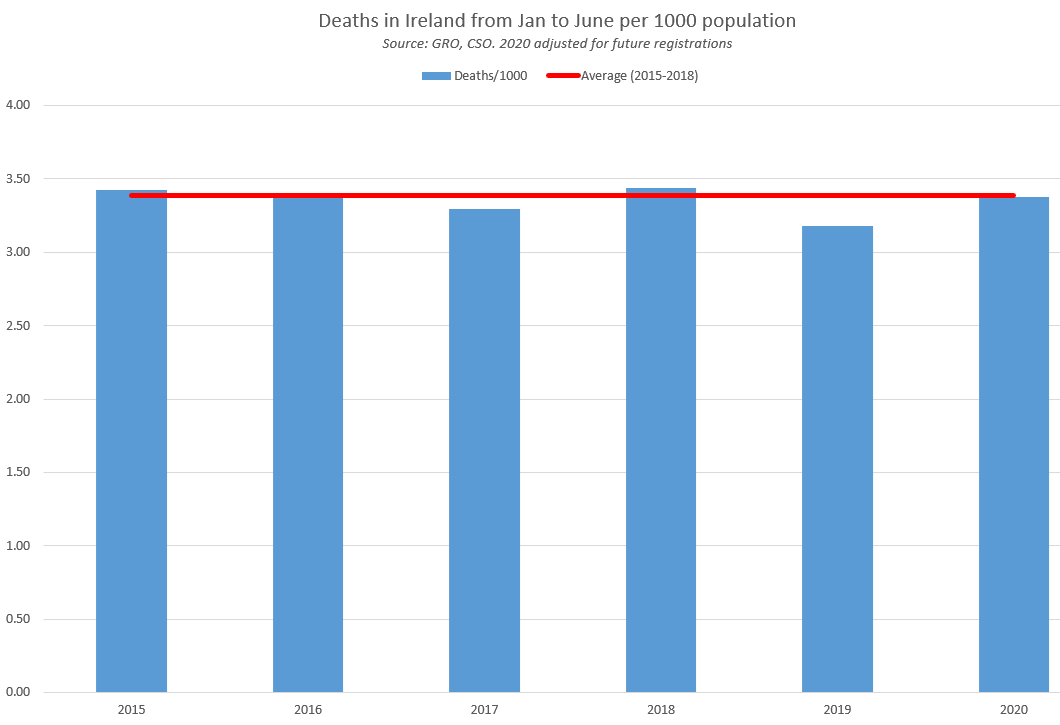
In that analysis, I adjusted for population growth.
But what about increasing age, which after all is Covid's major risk factor?
The ONS already did this for England: annual age-adjusted mortality is 2% worse than 5 years ago.
Wales is doing slightly better than 5 years ago:

But what about increasing age, which after all is Covid's major risk factor?
The ONS already did this for England: annual age-adjusted mortality is 2% worse than 5 years ago.
Wales is doing slightly better than 5 years ago:
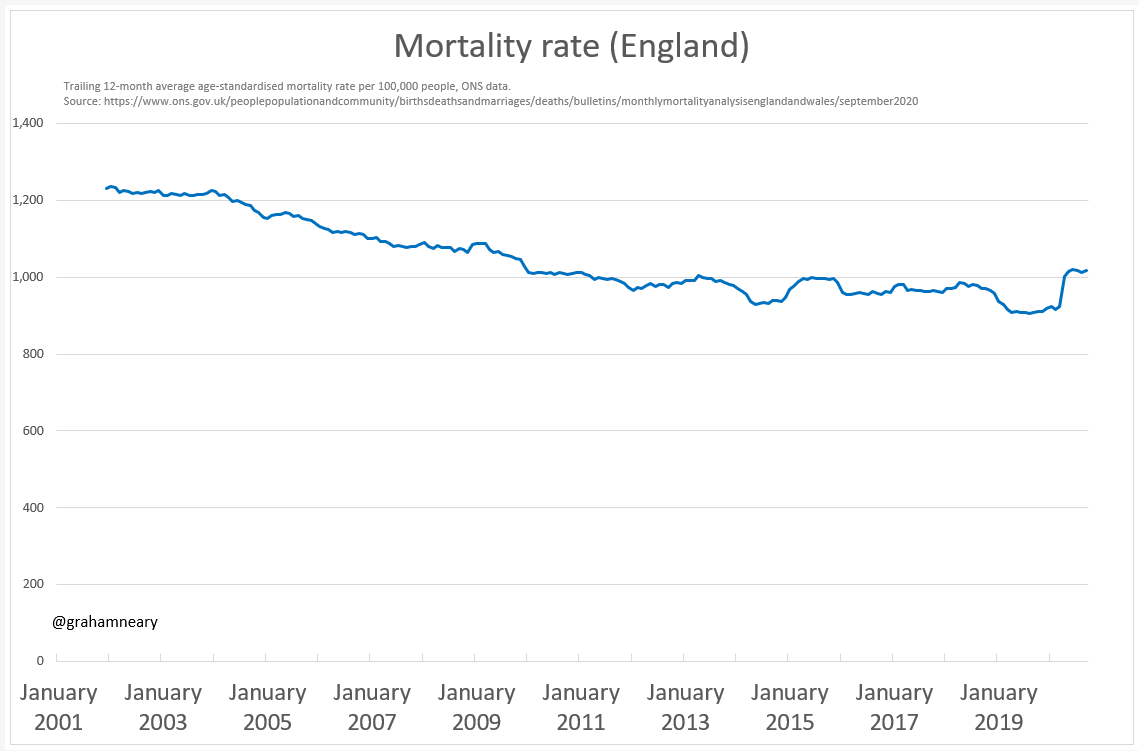
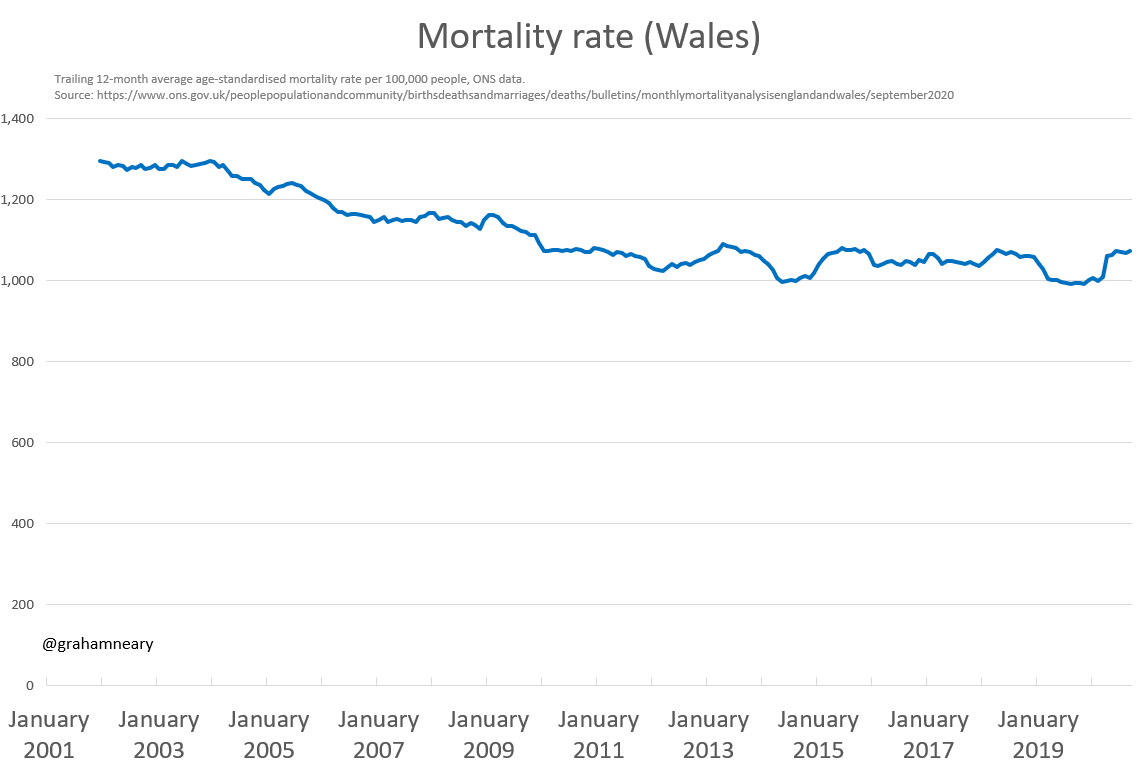
Furthermore, the charts prove that this year has been safer than every year in the 2000s, for both England and Wales.
In Wales, there is no real signal that mortality is worse than a normal year.
And what about Ireland?
Here's the Irish age distribution changing over time:
In Wales, there is no real signal that mortality is worse than a normal year.
And what about Ireland?
Here's the Irish age distribution changing over time:
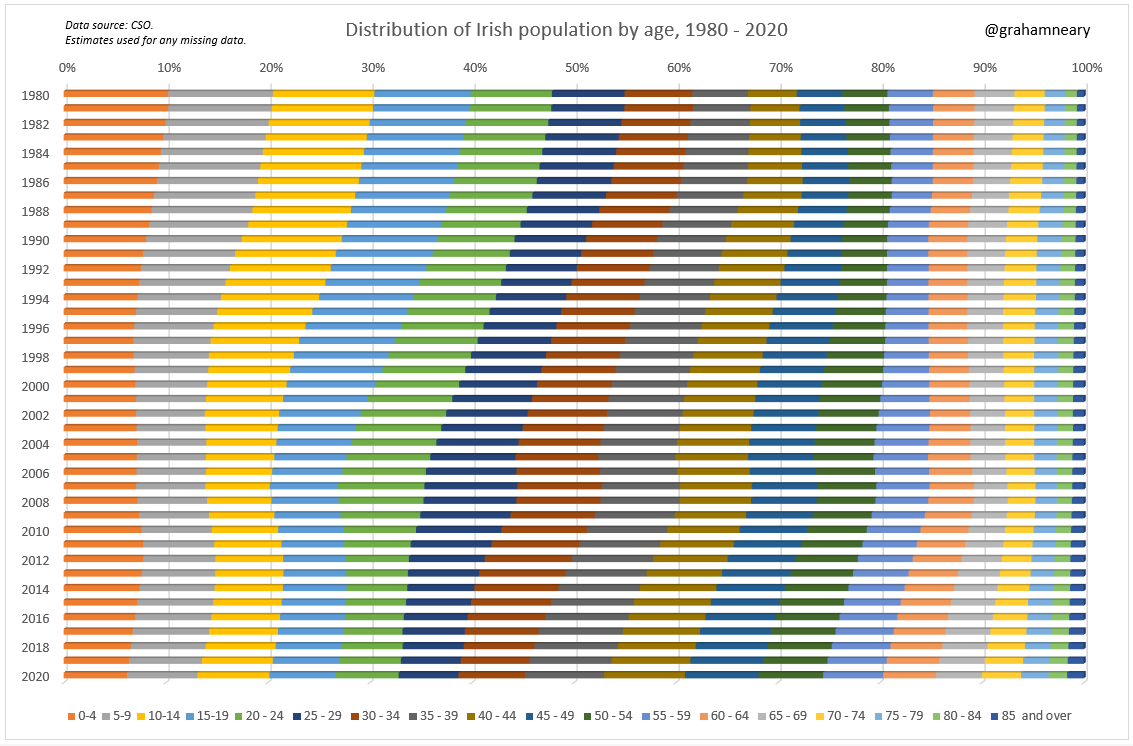
It turns out that the share of the Irish population aged 70+ has increased by nearly 50% since 1980.
In the last five years alone, it has increased by nearly 15% - this is really important.
All of the senior age cohorts are now at all-time highs.

In the last five years alone, it has increased by nearly 15% - this is really important.
All of the senior age cohorts are now at all-time highs.
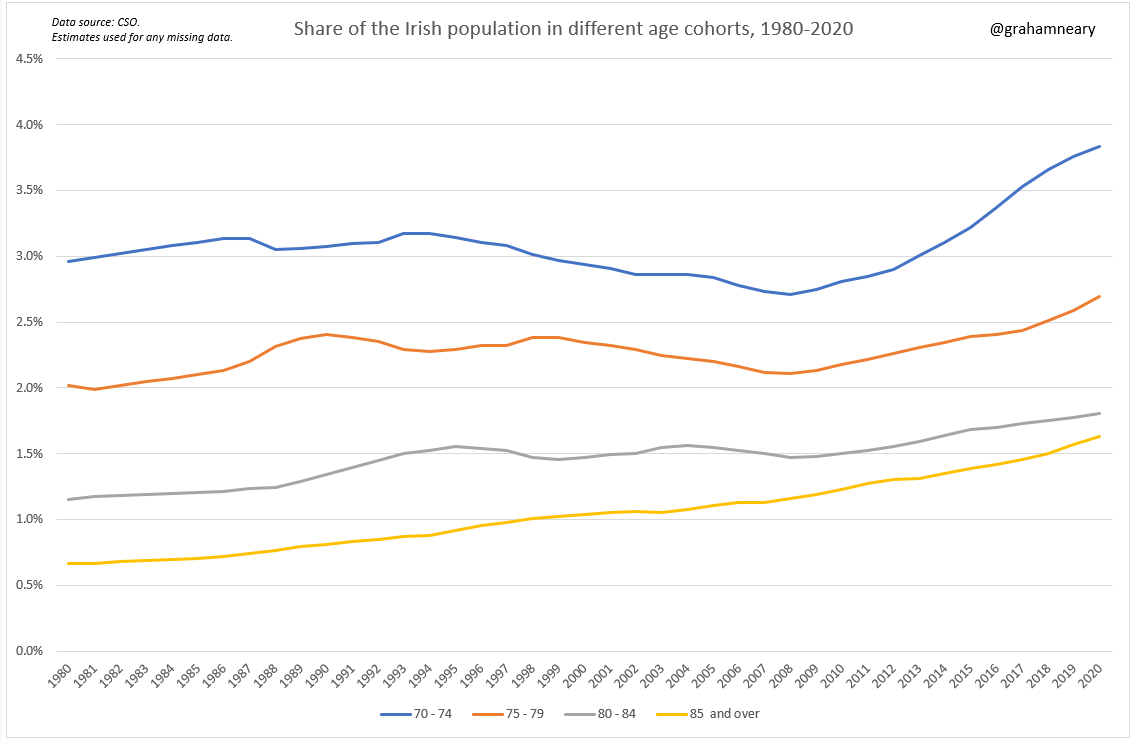
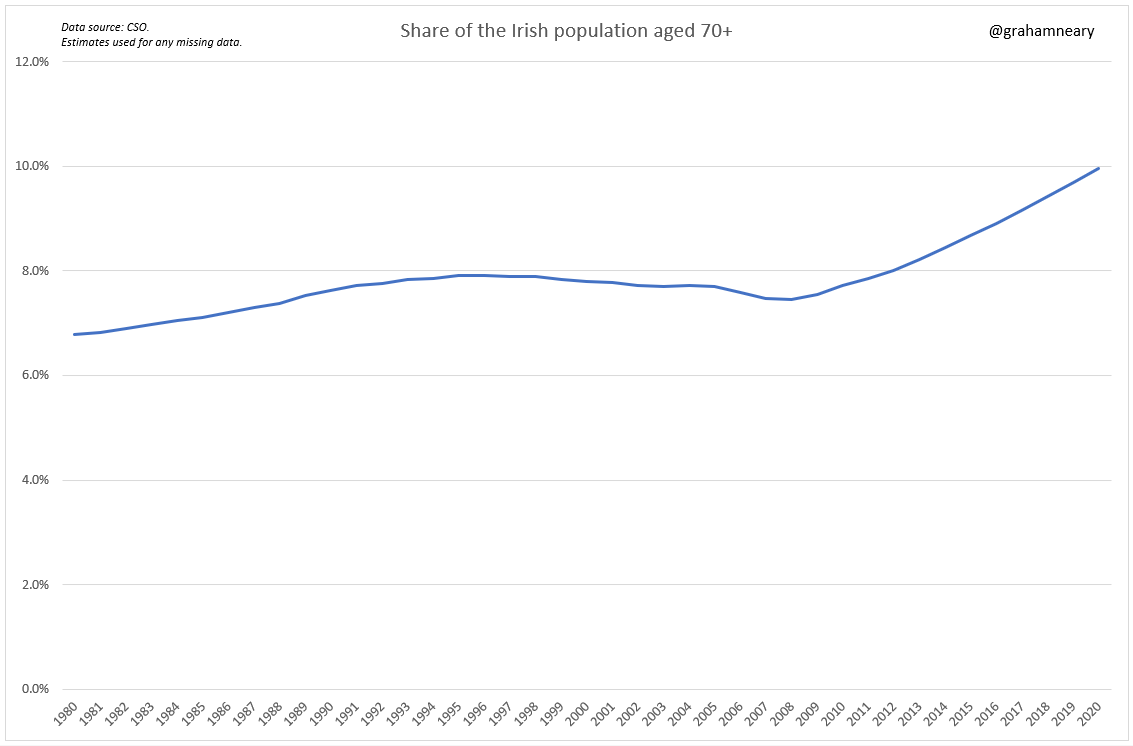
What this means is that my previous calculations were far too pessimistic. I simply divided deaths by population size, without considering how much older the population had become.
I have now adjusted for age, using some estimates where necessary.
The result is stunning.



I have now adjusted for age, using some estimates where necessary.
The result is stunning.
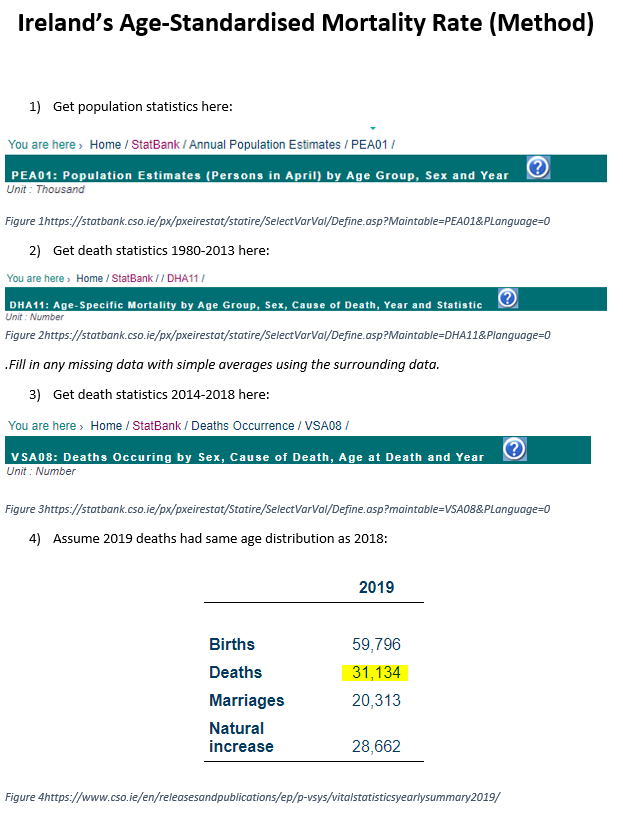
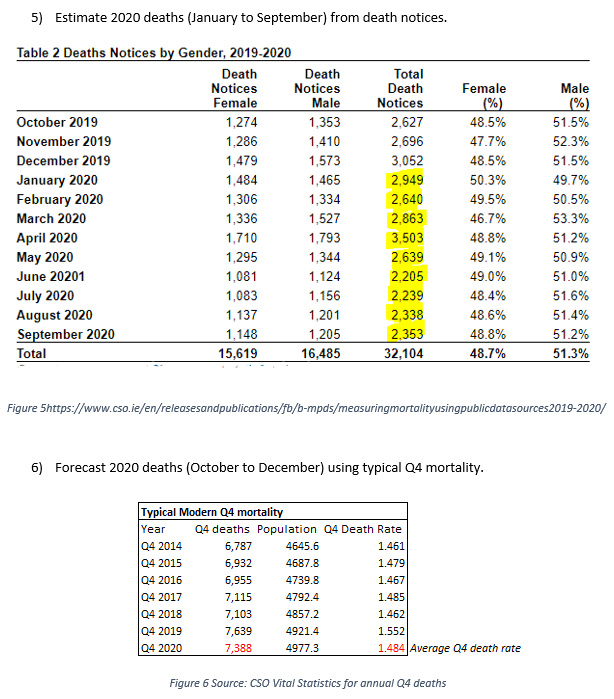
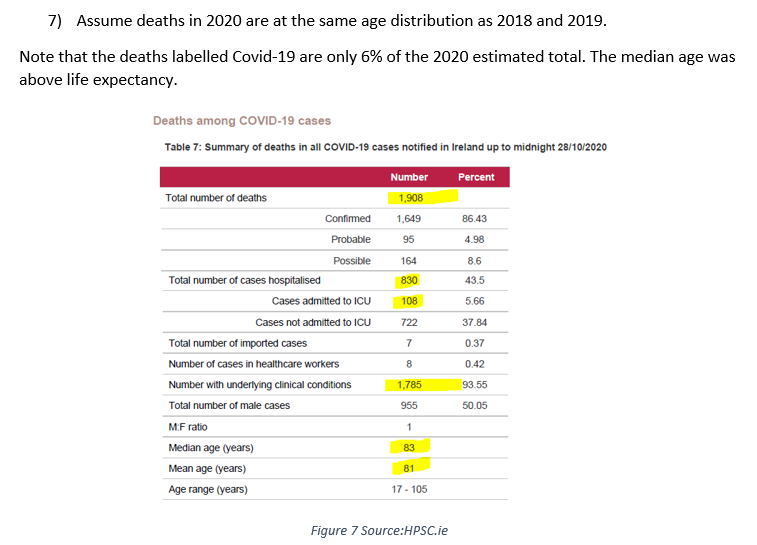
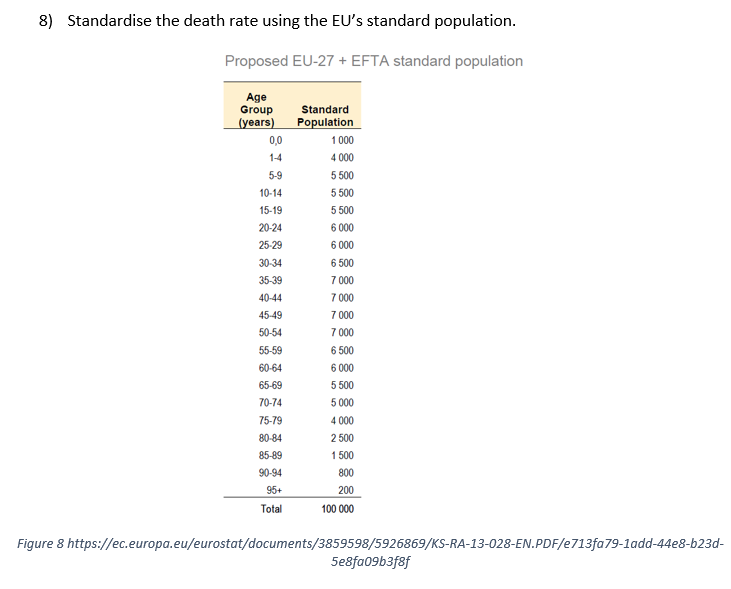
The result is that 2020 is not simply shaping up to be an average year for Ireland.
It's shaping up to be the safest year ever, in the history of the country. Safer than all previous years.
Not exactly what the media narrative would have you believe, is it?
It's shaping up to be the safest year ever, in the history of the country. Safer than all previous years.
Not exactly what the media narrative would have you believe, is it?
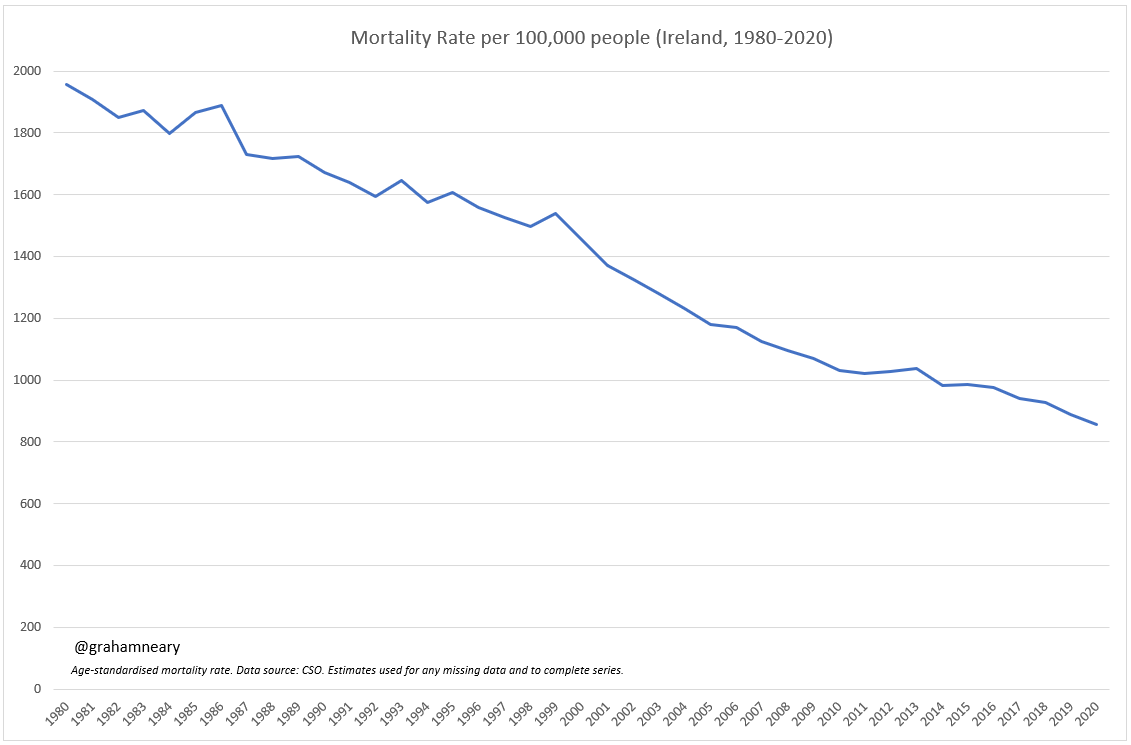
Here's some essential context for you: the percentage share of the UK population in the most senior age cohorts, compared to Ireland.
The UK has one of the oldest populations in the world.
The UK has one of the oldest populations in the world.
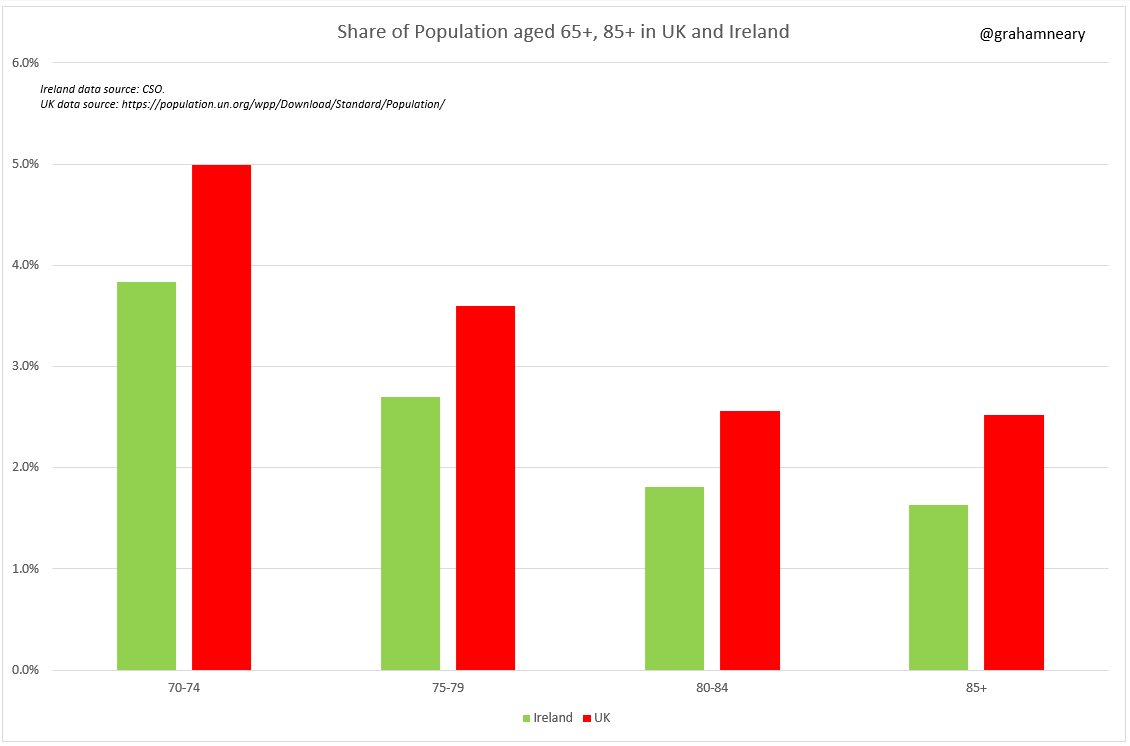
CONCLUSIONS
Annual age-adjusted mortality rates in England and Wales have been set back only to the levels of 2010 and 2015, respectively.
In Ireland, there has been zero impact on annual age-adjusted mortality in 2020. Age-adjusted mortality continues to relentlessly improve.
Annual age-adjusted mortality rates in England and Wales have been set back only to the levels of 2010 and 2015, respectively.
In Ireland, there has been zero impact on annual age-adjusted mortality in 2020. Age-adjusted mortality continues to relentlessly improve.
• • •
Missing some Tweet in this thread? You can try to
force a refresh

